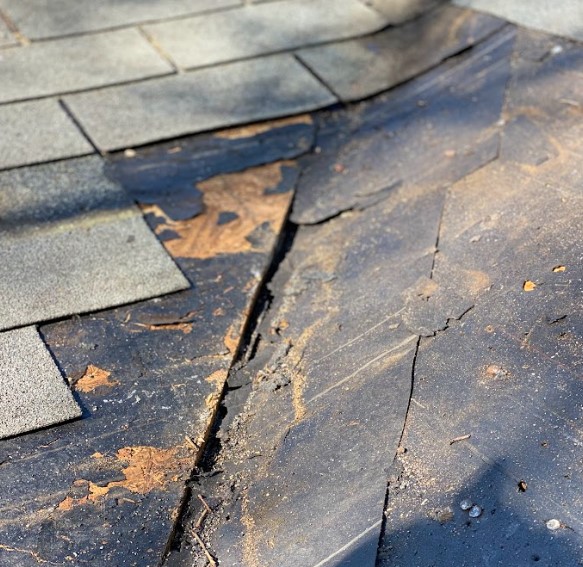We get it; your roof might not seem “all that important,” but look at it this way… Your roof does a lot more than just cover your home, it’s also your very first line of defense against everything from harsh weather to making sure your heating or cooling stays where it should be. Furthermore, when it comes to roof installation, cutting corners or choosing the wrong installer can lead to serious consequences. Poor roof installation may not immediately reveal its dangers, but over time, the issues can escalate into costly repairs and even health and safety hazards. Let’s uncover the hidden risks of a poorly installed roof and how you can protect your home from these dangers.
Structural Damage and Moisture Issues
One of the most immediate threats of a poorly installed roof is structural damage. Improperly aligned shingles, poor flashing installation, or gaps in the roof create vulnerabilities, allowing water to seep in during heavy rains or snowmelt. Over time, this moisture can cause wood to rot, weaken structural beams, or trigger mold and mildew growth, which not only impact your home’s integrity but can also pose health risks to you and your family.
Your roof should serve as a solid barrier, but when improperly installed, that barrier is compromised, leaving your home susceptible to leaks and weather damage. This may mean dealing with unsightly stains, warped ceilings, or, in extreme cases, partial roof collapses. Repairing structural issues can cost thousands of dollars—costs that could have been avoided with a proper installation from the beginning.
Reduced Lifespan of Your Roof
Even the highest-quality materials won’t perform well if the roof isn’t installed correctly. Poor craftsmanship can lead to premature wear and tear, meaning your roof will fail sooner than it should. While roofs are typically designed to last 20–30 years or more, improper installation can cut their lifespan dramatically, forcing homeowners to replace or repair their roof much sooner than planned. This not only impacts your budget but also disrupts your peace of mind.

Safety Hazards for You and Your Family
Your roof isn’t just about aesthetics or protecting your home; it’s about keeping you and your family safe. A poorly installed roof may fail to withstand harsh weather conditions, such as high winds, storms, or heavy snowfalls. Loose shingles or deteriorated materials can become flying debris in a storm, and a weak roof structure may not hold up during extreme conditions.
Beyond these risks, moisture problems from poor installation can lead to the growth of mold and mildew, which can result in respiratory issues, allergies, and other health concerns. Your home should be a safe haven—not a place that puts your safety at risk.
How to Protect Your Home from Poor Roof Installation
The good news is that the dangers of a poor roof installation are preventable if you take proactive steps. The first and most important decision is choosing an experienced, trustworthy roofing contractor. Always look for reliable professionals who are licensed, insured, and have a strong track record of successful installations.
Take the time to research roofing materials to ensure your contractor is using high-quality products that are properly suited for your home and local climate. And don’t forget the value of communication—clear expectations and thorough inspections throughout the installation process can help avoid potential pitfalls.
Your Solution Starts Here – Contact Piedmont Roofing Co. in Atlanta
If you’re worried about safeguarding your home with a roof that’s properly installed and built to last, choose experts who prioritize your safety, comfort, and budget. Piedmont Roofing Co. in Atlanta has the expertise you need to ensure your roof is installed right the first time. With years of experience, a commitment to quality craftsmanship, and a robust understanding of what makes a roof last, we’re here to protect your home and your peace of mind.
Don’t leave your home’s first line of defense to chance. Contact Piedmont Roofing Co. in Atlanta today to schedule a consultation and take the first step towards a safer, more secure home.
